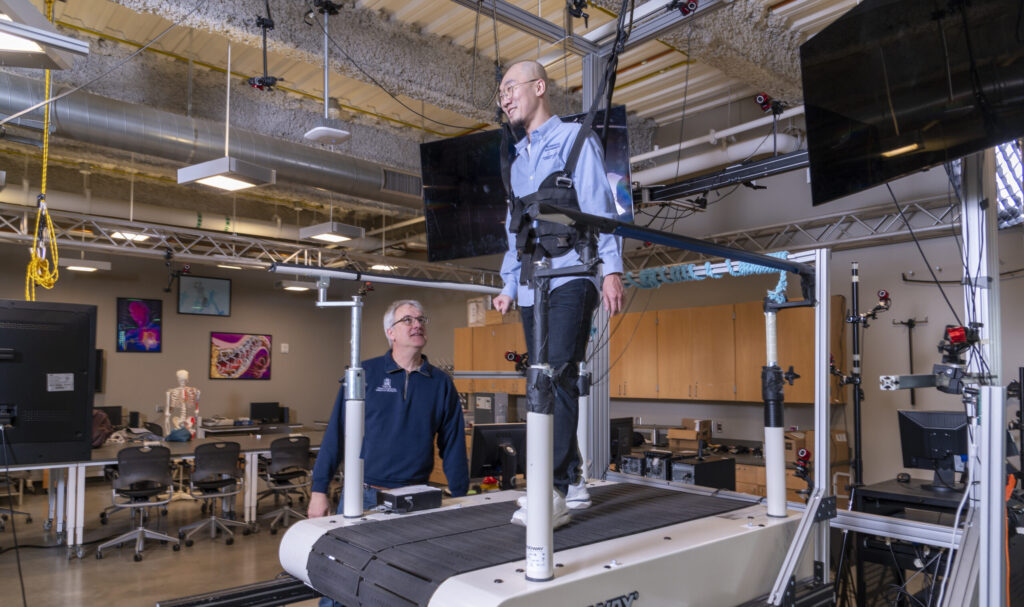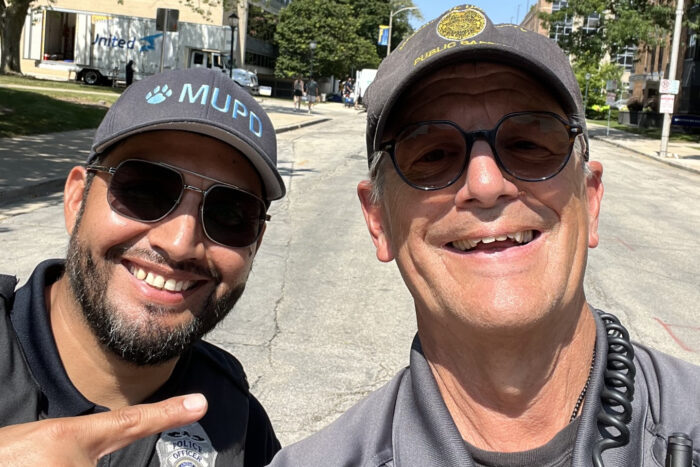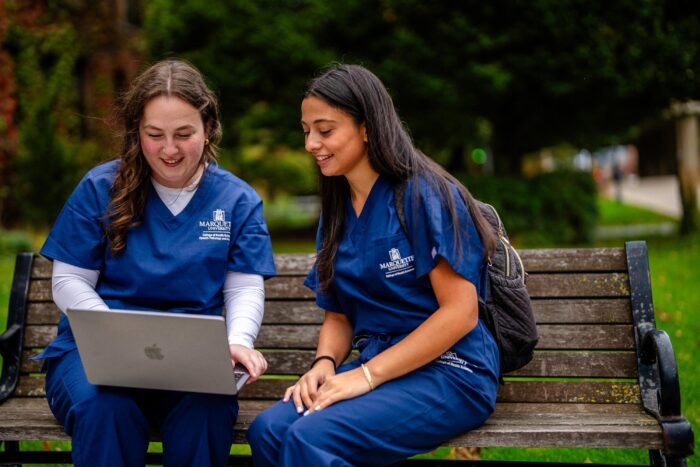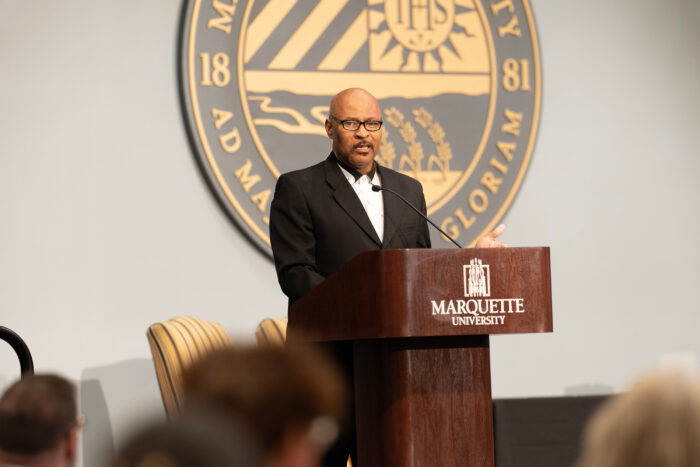
In their home and work routines and contacts with their communities, people with multiple sclerosis often face walking difficulties, debilitating fatigue and a high risk of falls that can lead to injury or exacerbated symptoms. These challenges can add emotional stress, fear and embarrassment to everyday situations and isolate them from healthy community experiences.
In the absence of a cure for this progressive disease that causes the immune system to attack, damage and scar the protective sheath around nerve fibers, clinicians have worked with patients to explore a growing range of new therapies and treatments to manage the disease’s symptoms and improve the quality of life for those with MS. Marquette’s Dr. Brian Schmit and his collaborators believe they have found a new solution – or more specifically, precise combination of solutions – that could fill unmet rehabilitation needs and provide improved mobility. The project is supported by a $3.34 million R01 research grant from the National Institutes of Health.
Schmit, Hammes Family Professor in the Marquette University and Medical College of Wisconsin Joint Department of Biomedical Engineering, and collaborators are studying how people with MS perform in high intensity exercises on a specialized treadmill designed to unsteady their sense of balance. Strapped in with safety harnesses, participants are prompted to exercise at a higher intensity than most MS therapies typically offer, all while the treadmill at their feet moves unexpectedly in different directions, literally pulling the rug out from under them.
“Results from this study could help develop a novel balance intervention for people living with multiple sclerosis.”
Dr. Allison Hyngstrom, chair and professor of physical therapy
The team sees the combination of the high intensity workout and balance training as key to improving balance and cardiovascular outcomes, and ultimately, getting more of the MS community walking. While the treadmill’s movement offers critical balance training, the high intensity exercise helps release beneficial chemicals such as serotonin and adrenaline to improve the cardiovascular and nervous system’s response to MS.
Dr. Allison Hyngstrom, chair and professor of physical therapy in the College of Health Sciences at Marquette, is a project co-investigator and frequent collaborator with Schmit on mobility projects for individuals with neuromuscular disorders. She notes that despite their considerable promise, these therapies combining stamina and balance training in clinical settings have not yet seen widespread use. “Clinicians often face safety challenges in combining these two important ingredients for optimizing motor performance,” says Hyngstrom. “Results from this study could help develop a novel balance intervention for people living with MS that leverages the benefits of high intensity training and dynamic perturbation training.”
To create this unique training solution for the MS community and clinicians, the multi-institutional, interdisciplinary team also benefits from the expertise of co-primary investigator Dr. T. George Hornby, professor of physical medicine and rehabilitation at Indiana University, as well as additional co-investigators at Marquette, Indiana University, the Medical College of Wisconsin and the University of Maryland.
Each study participant will join researchers on campus at Marquette or Indiana for 30 training sessions spanning six months. During and after the training sequence, participants will be evaluated for their six-minute walking distance, gait and balance performance, confidence in balance, fatigue levels, metabolic rates, total community steps taken when away from training, and more. The team aims to repeat this protocol with 80 individuals by 2027. And based on the positive reaction thus far from the community, researchers are confident in their ability to find the partners they need.
Schmit notes the MS community is eager to contribute to the study and push research forward. “The MS community has an incredible thirst for knowledge and education around the disease,” says Rob Multerer, president of the National Multiple Sclerosis Society’s Wisconsin chapter. “This community is highly engaged, highly inquisitive and highly active in wanting to be a part of the cure.”
“We have not had to go to great lengths to find participants for our study. People with MS are really engaged in finding something that might work for them,” says Schmit. “The search for treatment is common. A progressive disease changes the way you view the world, and because of that, people with MS have a tight community and an enthusiastic attitude.”
Multerer, who first met Schmit at Marquette Soccer’s MS awareness match, visited campus recently to see the training sessions in action. He sees hope in the work that Marquette is leading, the same hope that inspired the National Multiple Sclerosis Society to support Schmit’s pilot study that led to this NIH project. For Multerer, Schmit’s team and the wider MS community, this project represents another step forward for people with MS to live their best lives.


